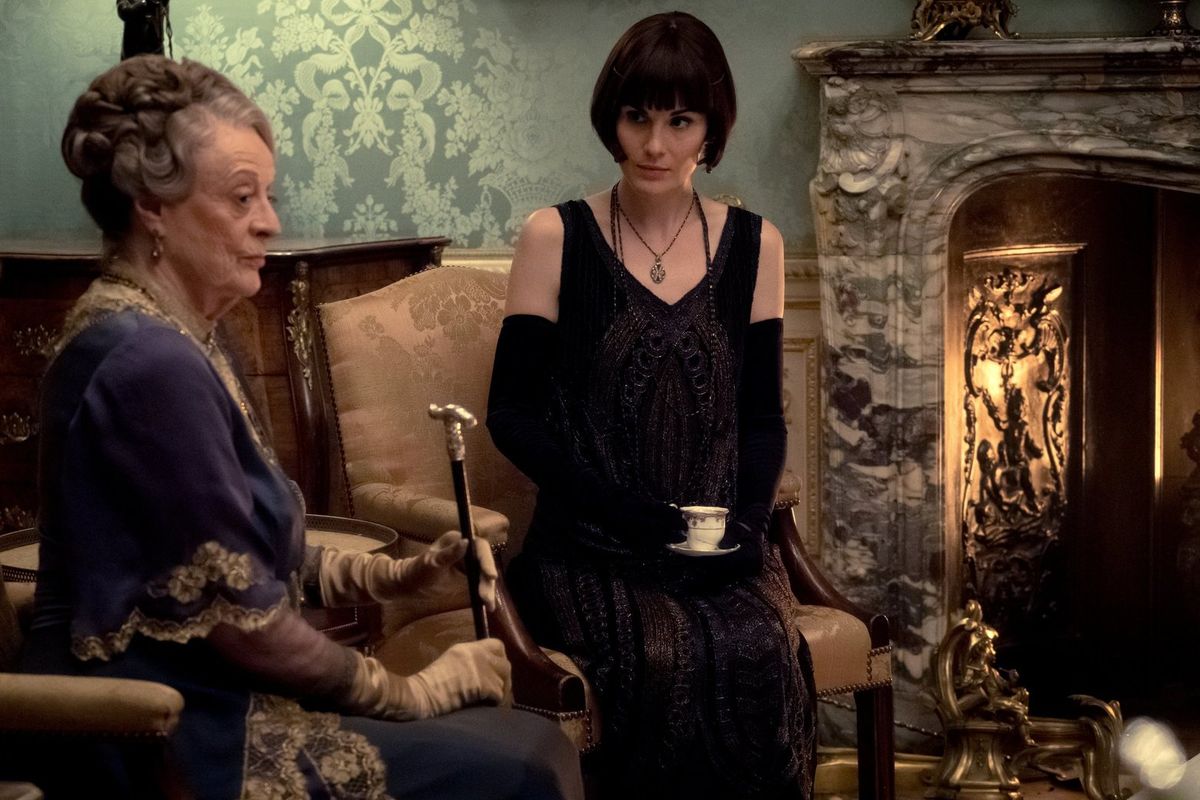“Downton Abbey” the Movie Maintains Delight of TV Show

Who is the “Downton Abbey” movie meant for? I see this question as an impediment in the creation of any TV movie that must both cater to a fervent fan base (even if it is made up of mostly old people, in the case of “Downton Abbey”) and a public that has not seen the show.
It’s a difficult seesaw to balance — juggling plot, characterization and character development, humor and a basic level of understanding. In addition, the stakes are especially high when dealing with such a critically-acclaimed show as “Downton Abbey,” which ended in 2015 after six seasons.
I fall into the party of movie-goers who are devoted fans of the TV show. My mom and I had a tradition where every Sunday, we would watch the show, looking out from layers of blankets into the world of the post-Victorian Crawley family and their panoramic estate, whose days of aperitifs and valets are marked with socioeconomic quandaries, friendships, scandal (a whole lot of scandal) and romance (a whole lot of romance).
The heart of “Downton Abbey” as a TV series lies in the wide cast of characters — in particular, the self-serving and witty Lady Mary (Michelle Dockery) who grows into her role as the future head of the house, finding love and empathy along the way, and Maggie Smith’s Violet Crawley, the Dowager Countess who provides an endless portfolio of endlessly-quotable one-liners (my favorite: “What is a week-end?”).
The movie picks up a couple years after the show’s season six finale with only a handful of changes in the household. Most of these are undone as the movie progresses in order to stay true to the show’s dynamics, such as the departure of former head butler Mr. Carson, who returns from retirement early in the film.
The movie is effective in this regard. A highlight was the joy derived from revisiting the show’s relationships and friendships: the movie relies upon the couplings of the Dowager Countess and Mrs. Crawley, and Mr. Carson and Mrs. Hughes. Both pairs are an older, more conservative formalist matched with a slightly younger, more liberal anti-authoritarian, whose differences are only offset by often unspoken love.
They bicker and disagree, their delightful rapport supplying the movie with humor (which the show also benefited from). Much of the movie’s sparkling charm comes from this sort of nostalgia for the show: the rolling hills of the English countryside and the people who inhabit it.
A handful of new characters, mostly new romantic partners for the few uncoupled characters in the show, liven the story. I enjoyed Imelda Staunton’s Lady Bagshaw, who forces the Crawleys to consider their morals and provides a foil to the Dowager Countess.
I had hoped the two would exchange scathing quips, but their interactions are actually quite tame compared to some of the show’s heated moments. This expectation may have been predicated upon the fact that the “Harry Potter” characters of both actors, Professor McGonagall and Professor Umbridge, share a colorfully-illustrated hatred in the fifth movie of that series.
I really enjoyed the film, and this conclusion comes from my perspective as a dedicated fan. If, however, I came into the film with no prior knowledge of the Crawleys and their bucolic English lifestyle, the question of whether or not I would have enjoyed this film is more challenging.
Much of the understanding of and appreciation for the characters’ struggles come from references to the show and the characters’ progression thus far.
Overall, however, the movie does offer a lot to non-fans, presenting a few good twists that I didn’t see coming, as well as some decent moments of tension, humor and cathartic resolution; nothing stands in these tactics’ way of engaging non-fans in the theater. In this regard, “Downton Abbey” the movie holds up on its own and is a passably-enjoyable movie. The film’s independence helps fans as well by making a more well-rounded and exciting movie. Unlike many movies based on TV shows whose characters end the running time of the movie exactly as they started it, “Downton Abbey” expands beyond the scope of the show.
The familiar world and characters of the TV show change irreversibly over the course of the movie as a result of the plot, in a way that feels similar to, yet independent from, the show. The movie was true to the show’s spirit while managing to engage its audience in a new way. In fact, as I noted in the theater, the movie feels like one long, extra high budget season finale.
There is charm in the discovery of a new world, especially one as developed and thought out as “Downton Abbey’s.” If you have never watched the show, you may not find the precise and sharp enjoyment of returning to a familiarity that I and many other fans experienced. But, the world of Downton Abbey and its fresh, new entry point in the form of this film are too good to warrant not watching the movie because of this difference.





Comments ()